- JAPANESE
- LANGUAGE
X
 THAT IS GOOD
THAT IS GOOD

Legal amount : height×width×Length=195×175×60(mm)
Materials : Putty, Sculpey, Styrofoam, leather cord
This is the first in a series of commemorative “clay figurines”. In 2011, I was invited by Aomori Prefecture to take a tour of Jomon sites and museums around the prefecture. I was surprised by the scale of the Sannai-Maruyama Ruins, and impressed by the Jomon Vessel with Flame-like Ornamentation and animal-shaped earthenware products I happened to see at Korekawa Archaeological Institution (Korekawa Jomon Kan). The buried forest, the tomb of Christ, and the hot spring of Sukayu were also nice. At that time, I was asked to create a work with a clay figurine as a motif, so I chose “Shakoiki-Dogu” without hesitation. I also saw the giant clay figurine at Kizukuri Station.
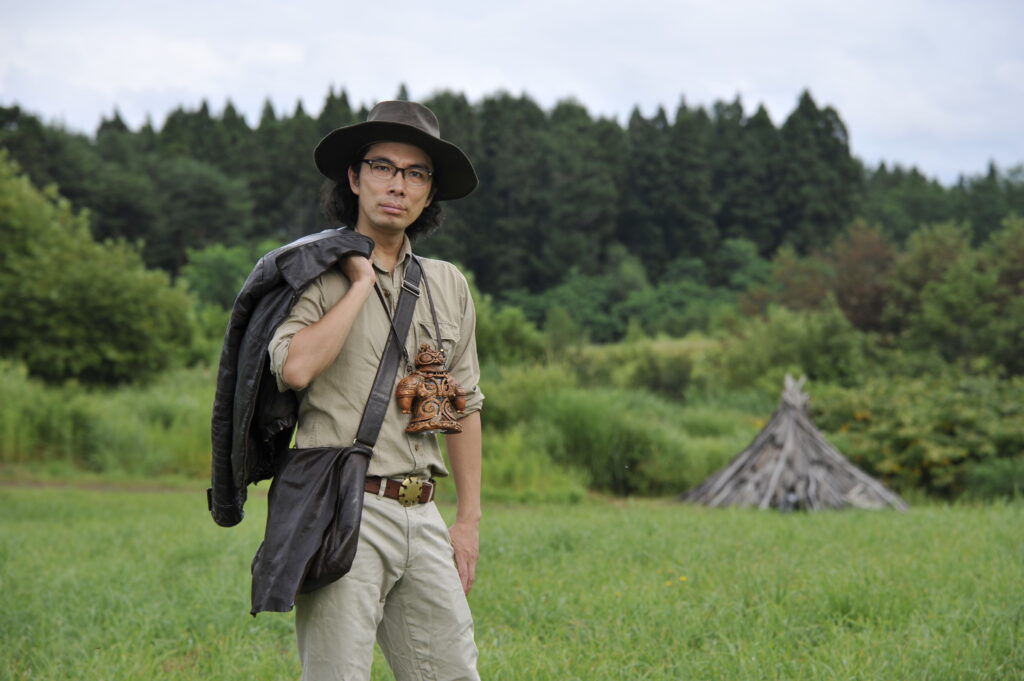
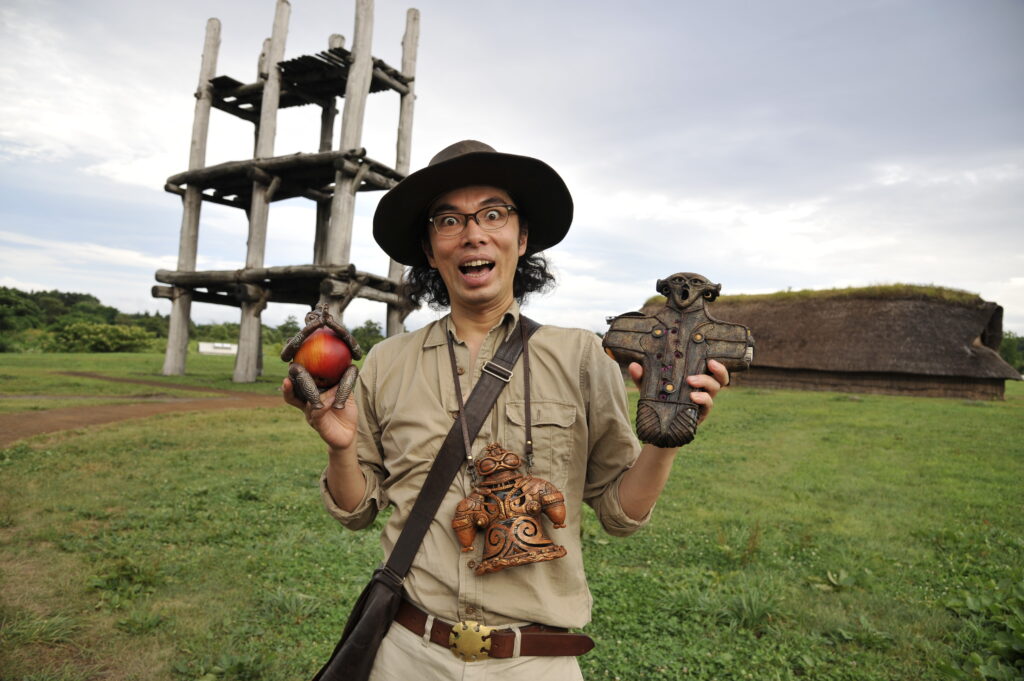
I don’t remember how it all started, but in the 1990’s, there was a fad for “Evian holders” (a mysterious tool to hang a leather strap Evian around your neck to use as a water bottle. No heat retention, like the hand spinner, it disappeared from sight in a flash.It reminded me of that, and I thought, “Let’s combine that with a clay figurine!
However, when I decided to make my own clay figurine and looked at the materials on clay figurines, I was so impressed with the originality that I thought, “I don’t think I can arrange this in an original way! I want to make it just as it is,” so I prepare the plastic bottle, but the exterior was copied as much as possible from the Shakoki-Dogu from the Kamegaoka Site.
The materials were different, but I felt as if I was reliving the making of clay figurines in the Jomon period.
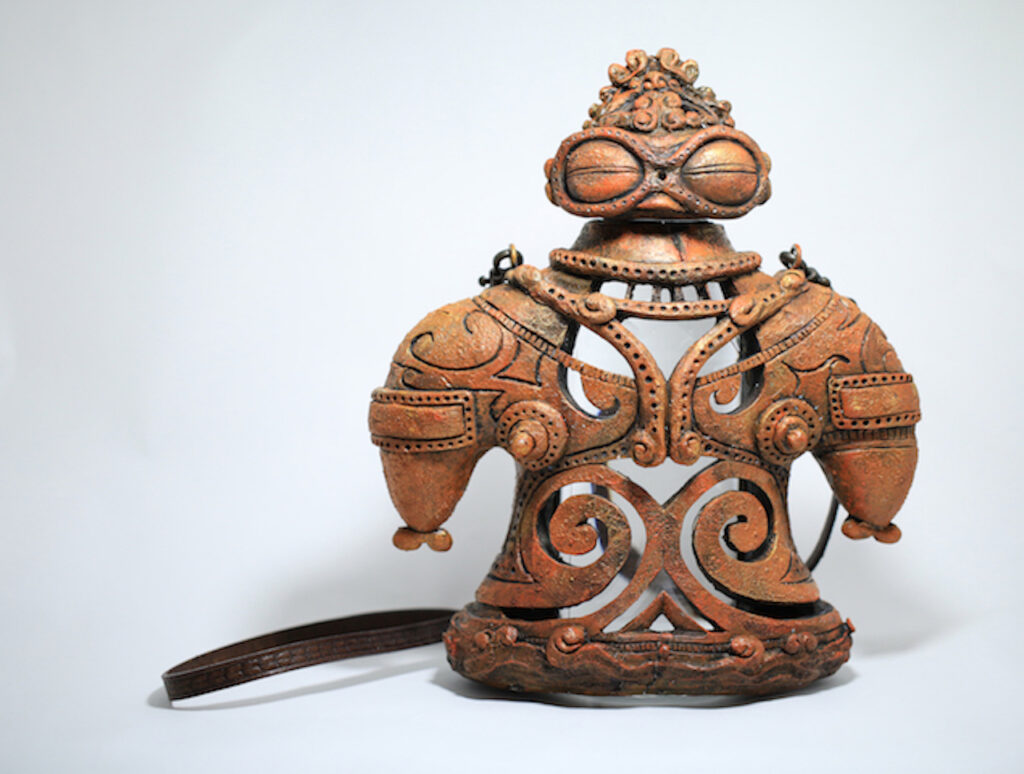
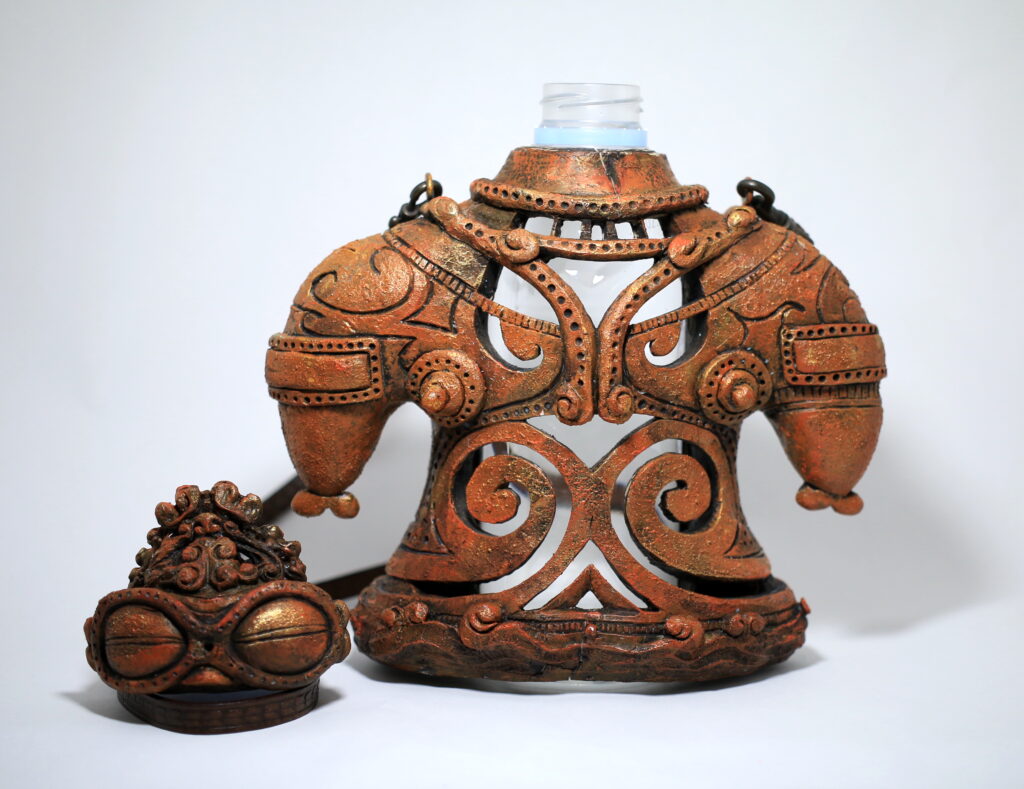
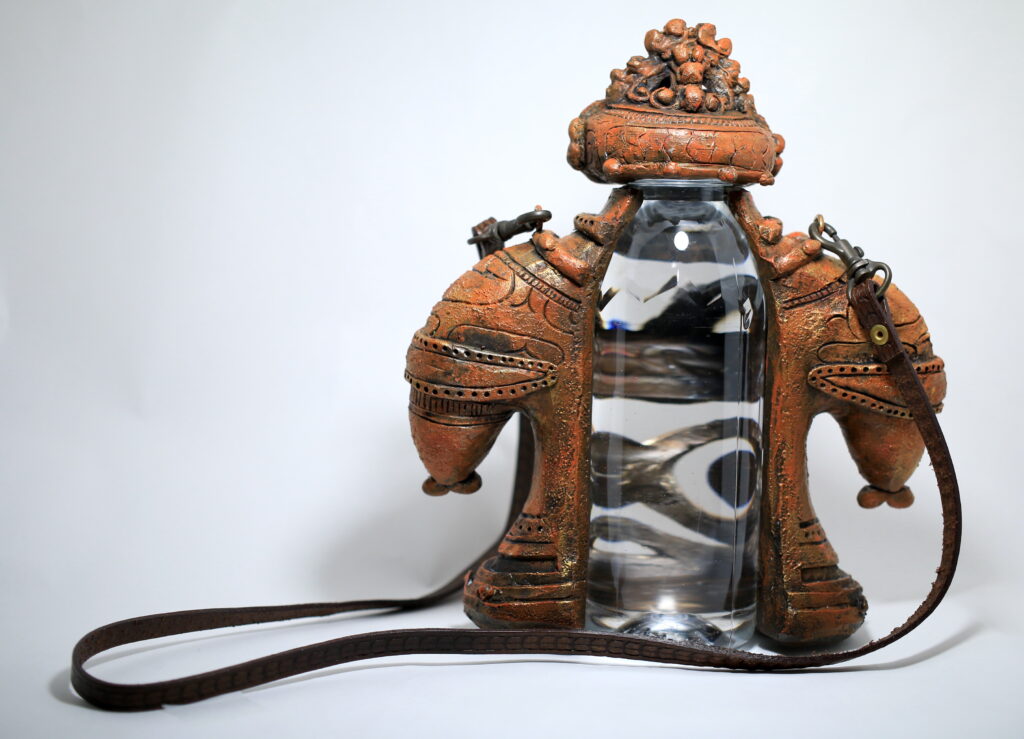
There were many things that I couldn’t understand until I made it, such as the subtle asymmetry of the pattern, and the realization that the connection of the lines had its own rules that were neither Western nor Eastern. Also, there was no particular reason why I didn’t put feet on it, but when people asked me, “Isn’t there something with feet on it?” I would say, “That’s just a decoration, the big people don’t understand that.”
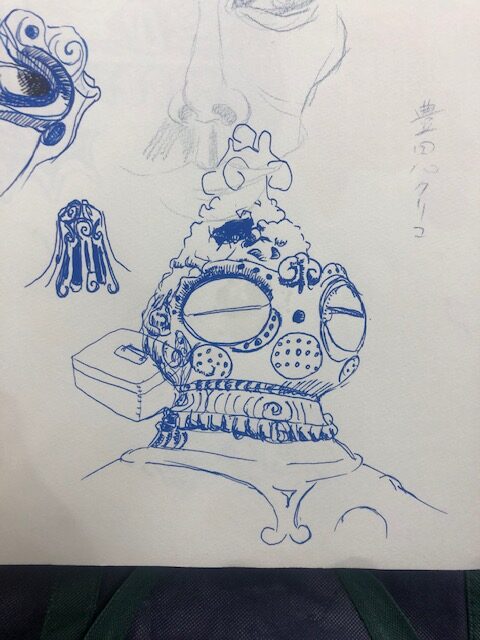
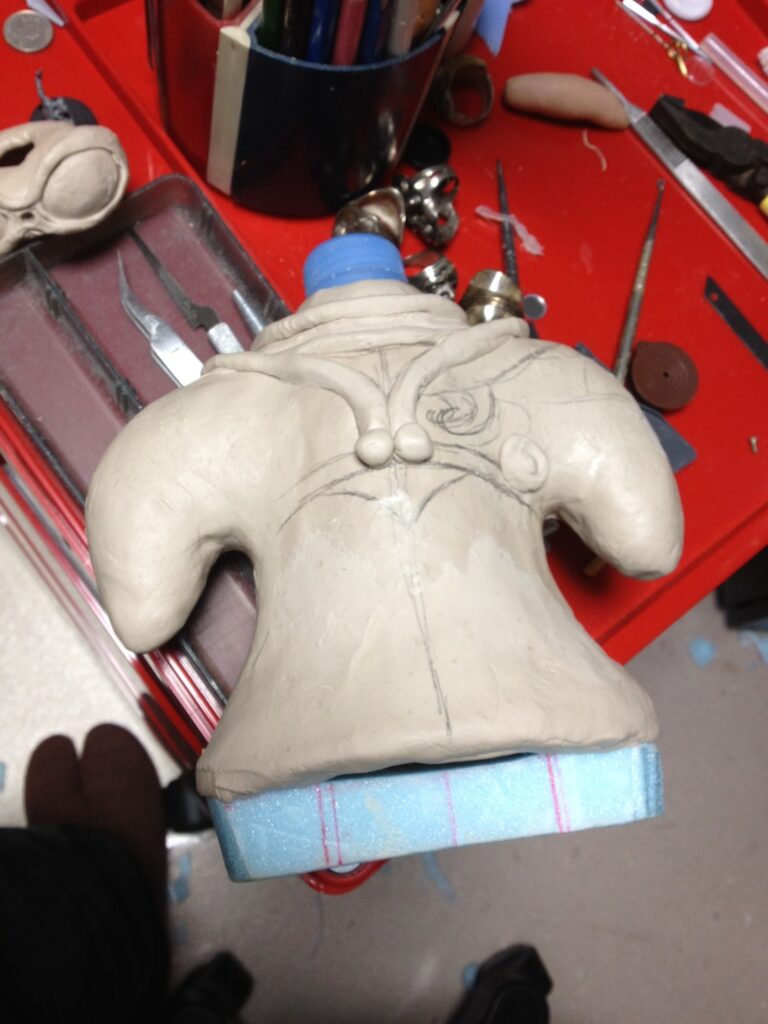
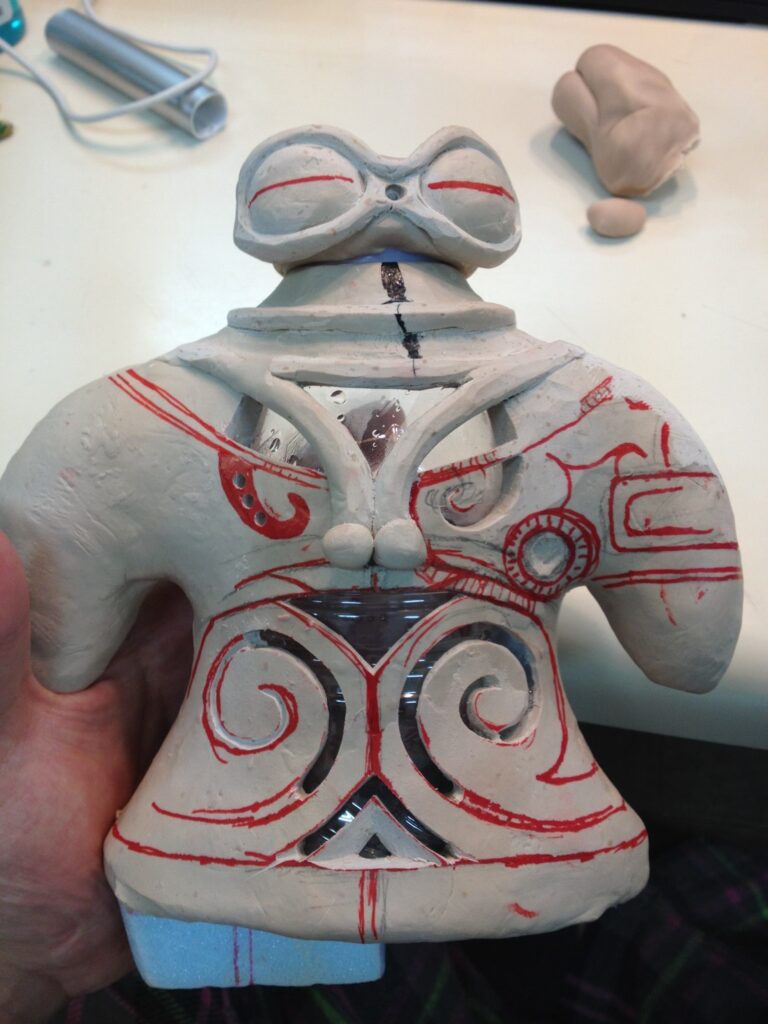
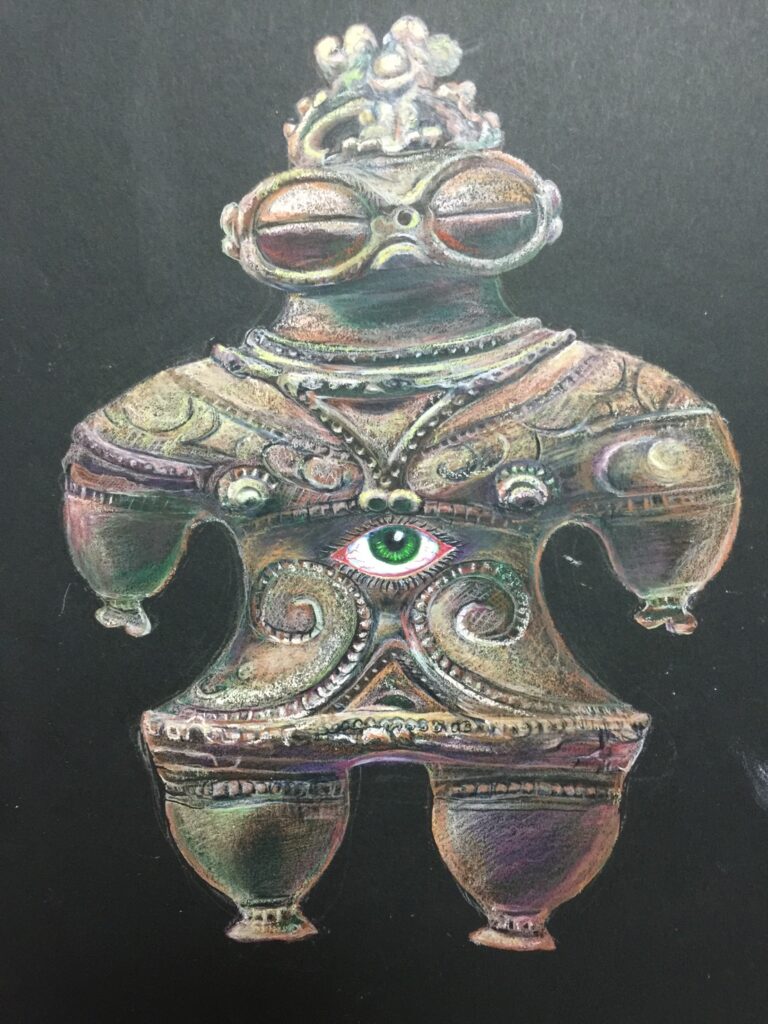
When I took it to Aomori after it was completed, it was very well received by the people of Aomori Prefecture. We had many ideas like, “Let’s commercialize this!”, but they didn’t go very well. When I had my solo exhibition in Taiwan in 2019, I finally made a soft vinyl version of this PET Bottle in DOGU as a crowdfunding gift. So now I can paint it any color I want! Also, the bottle design of the current Evian has changed since then, so I modified it for the latest model.
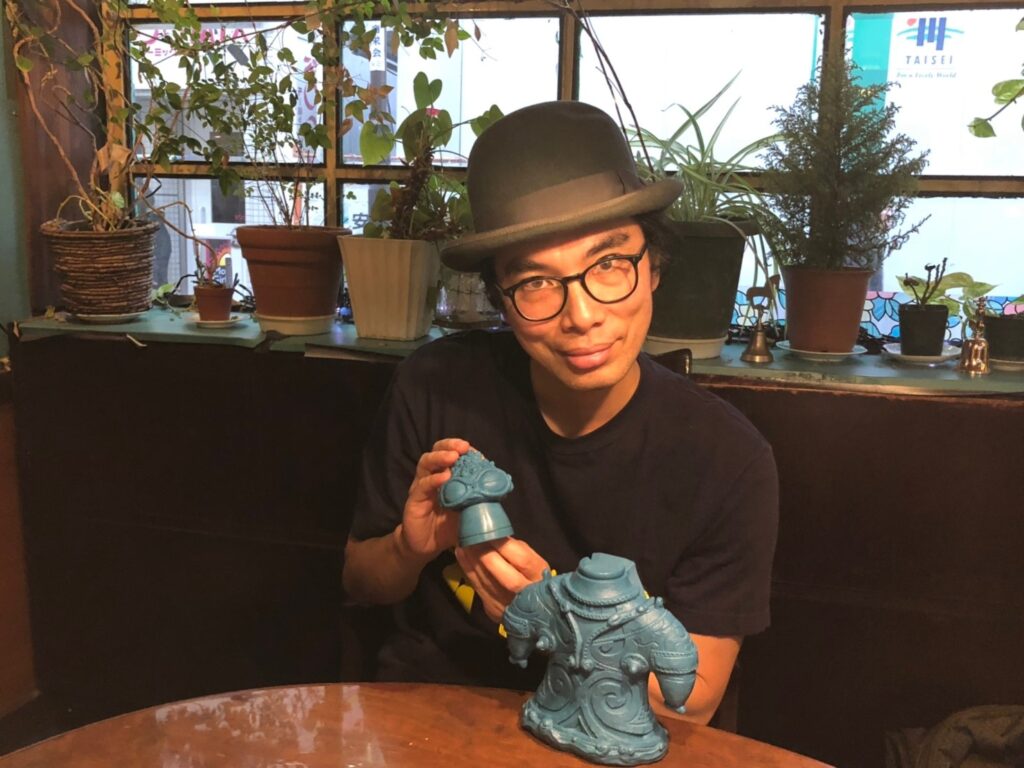

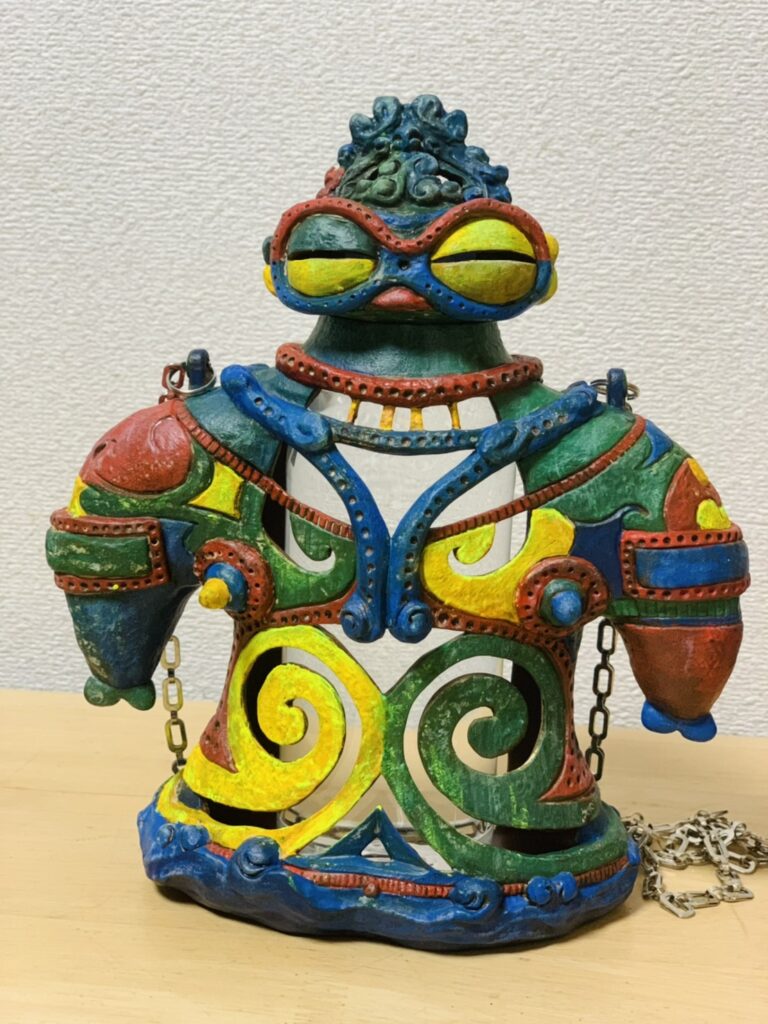
Until I made this piece, I thought that if I just made it as is, it would not be my own original work. But after making this piece, I feel that the possibilities for my own work have expanded. I also came to love Jomon.
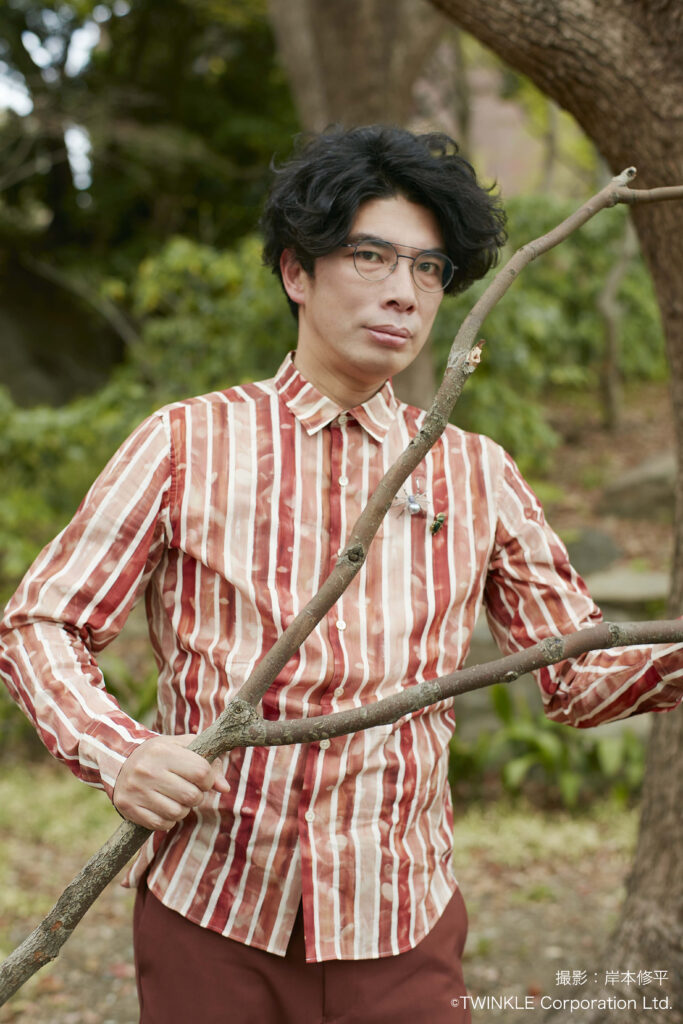
Jin Katagiri
Born November 27, 1973 / Born in Saitama Prefecture / Graduated from Tama Art University
Active in the stage, movies, radio, etc., mainly in TV dramas series. Major appearances in recent years include “99.9% -Criminal Lawyer-” (TBS), “Your Turn to Kill” (NTV), and “NHK Morning drama series Yell” (NHK).
In addition to acting, he also creates clay, and from 2016 to 2018 he held a national tour at the “Jin Katagiri Absurdity Clay Art Exhibit Giri Ten.” In 2019, he is holding his first overseas solo exhibition in Taiwan.
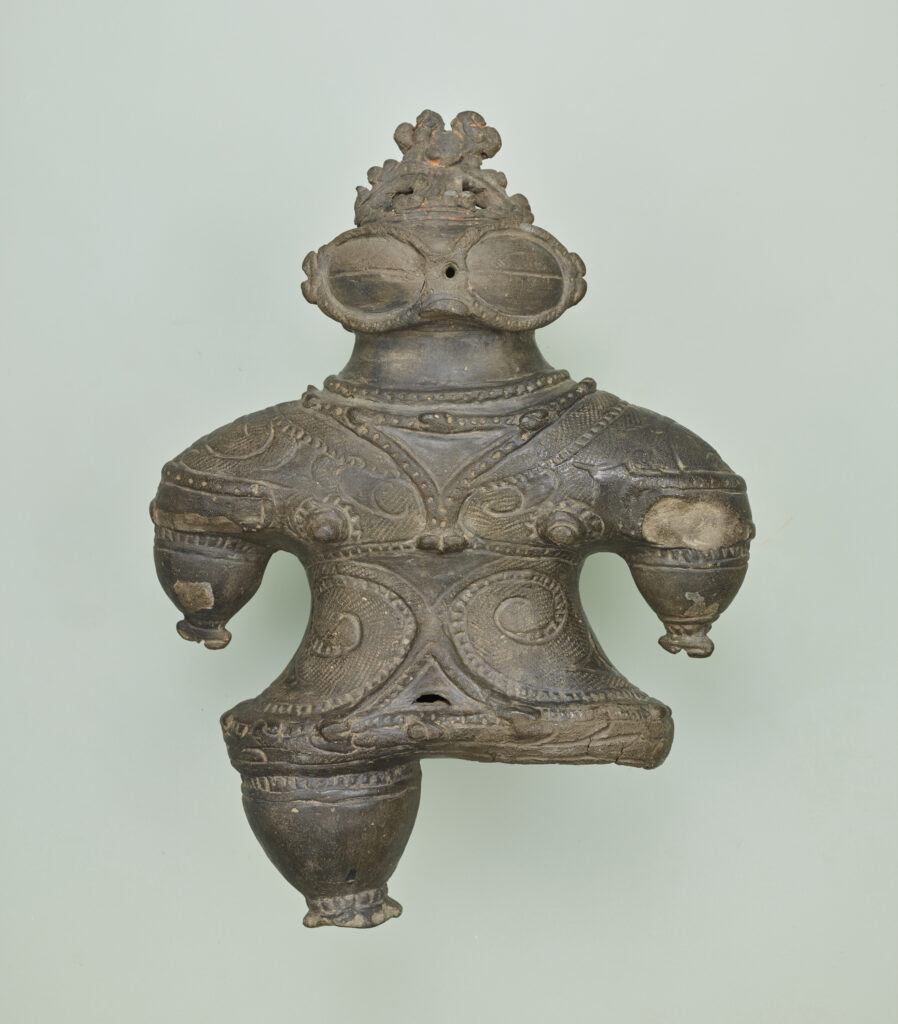
Excavation: Kizukuri Kamegaoka, Tsugaru City, Aomori Prefecture
Size: 34.2 cm in height.
Period: Jomon Period (Late Period), 1000 BC – 400 BC
Important Cultural Property
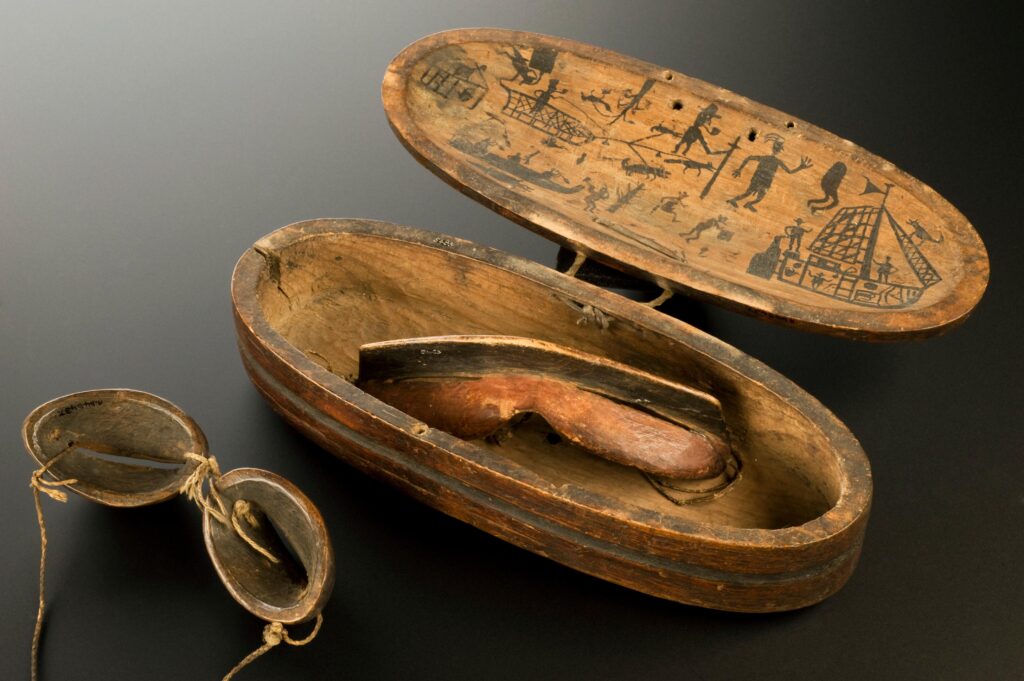
One of the most famous and popular clay figurines in Japan is this Shakoiki-Dogu. It was discovered during the Meiji era (1868-1912), and was named after the unique expression of its eyes, which resembled those of a shakoki, a device used to block out the glare of snow.
In fact, it is thought to be an exaggerated representation of the eyes, rather than a shading device. In contrast to the large eyes, the ears, nose, and mouth are small. The head and other parts of the body are still painted in red, suggesting that the entire body was painted red at the time of production. It is also said that the figure of the clay figurine is sometimes used as a reference to understand the fashion of people in the Jomon period. The crown-like ornaments on the head are thought to have represented the way women of the time tied their hair and the hairpin, and the ornaments around the neck are said to have represented neck and breast ornaments.
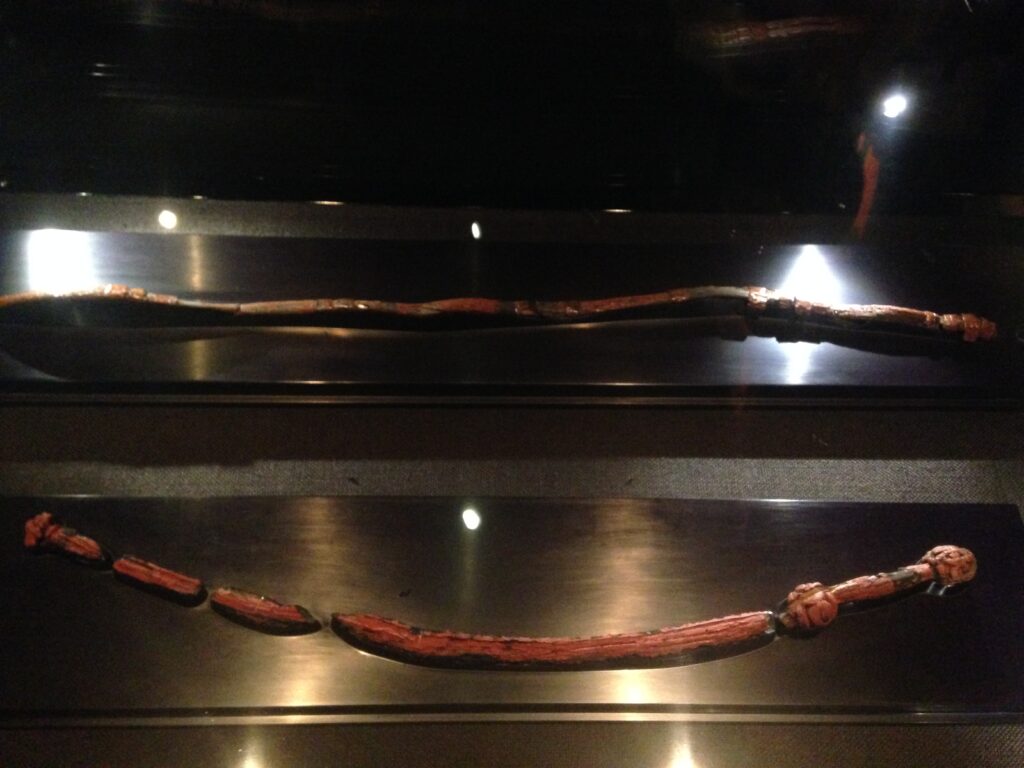
Clay figurines have appeared since the early days of the Jomon period, but they are consistently made as female figures. This is because they are thought to have been used to pray for safe births, prosperity of offspring, and abundant natural blessings, since women give birth to and nurture life.
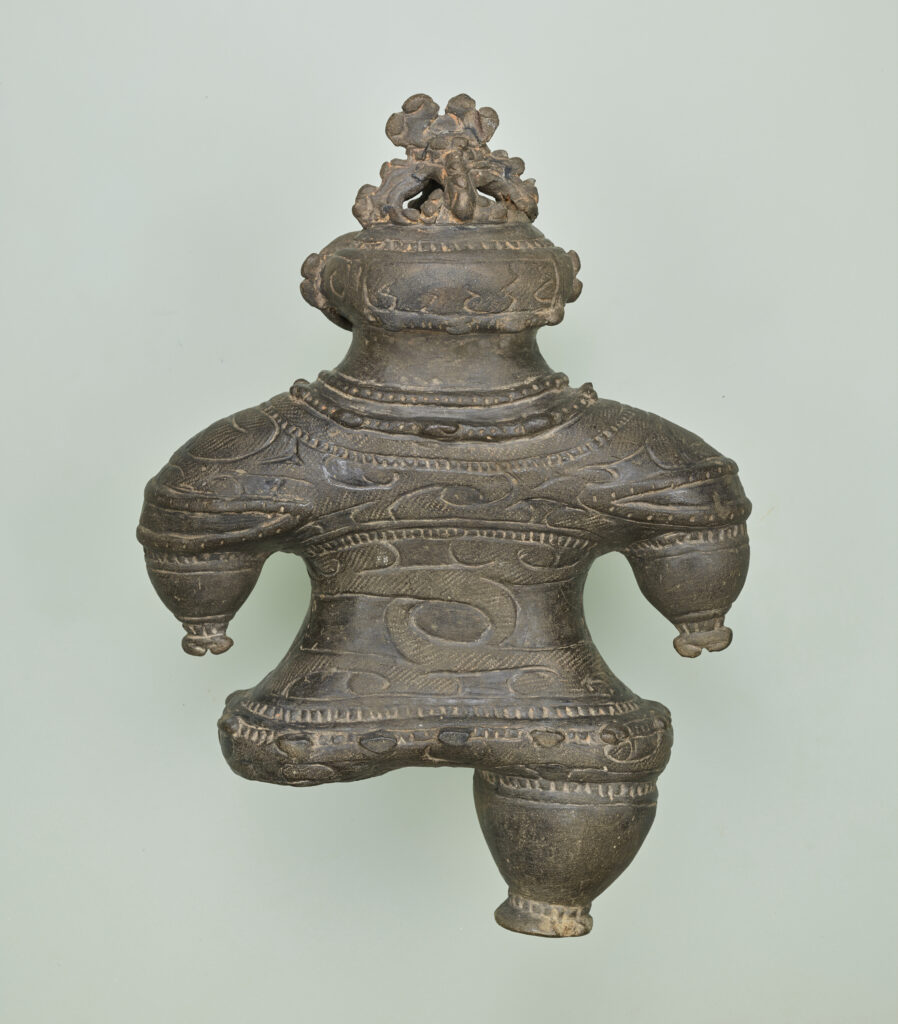
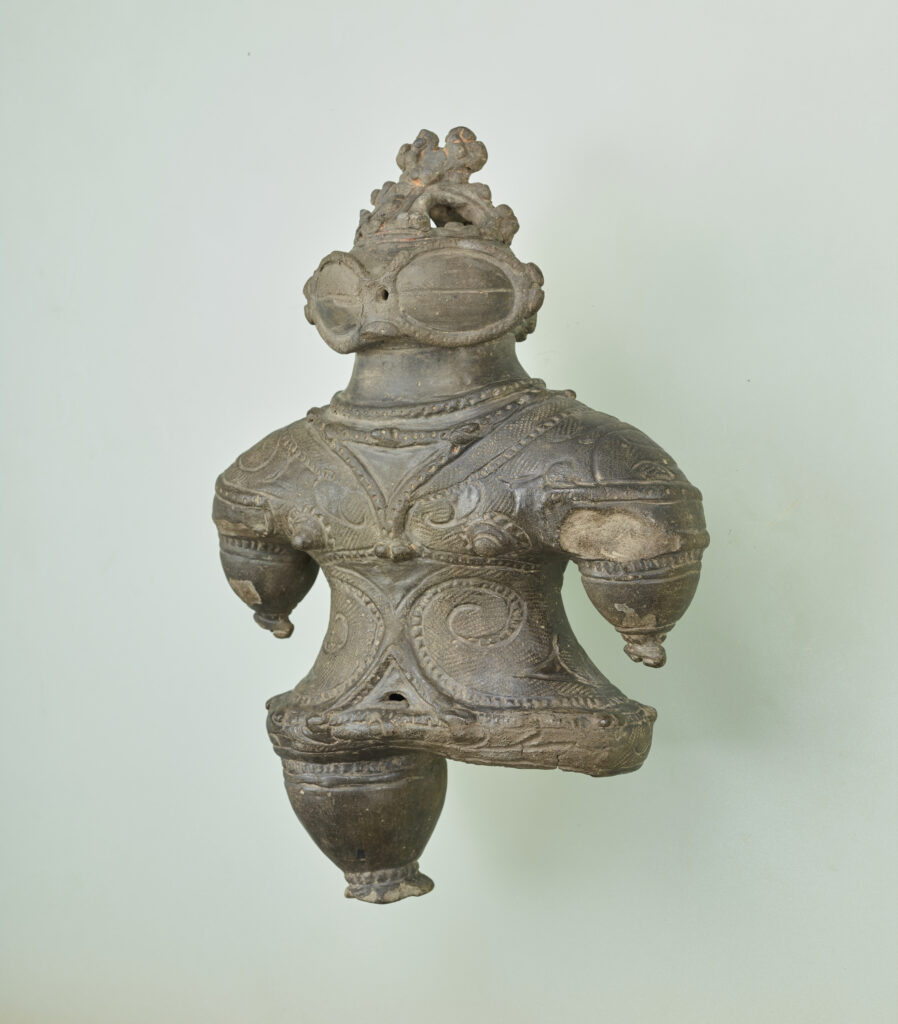
References(including photoes)
(ColBase) 日本語 / English
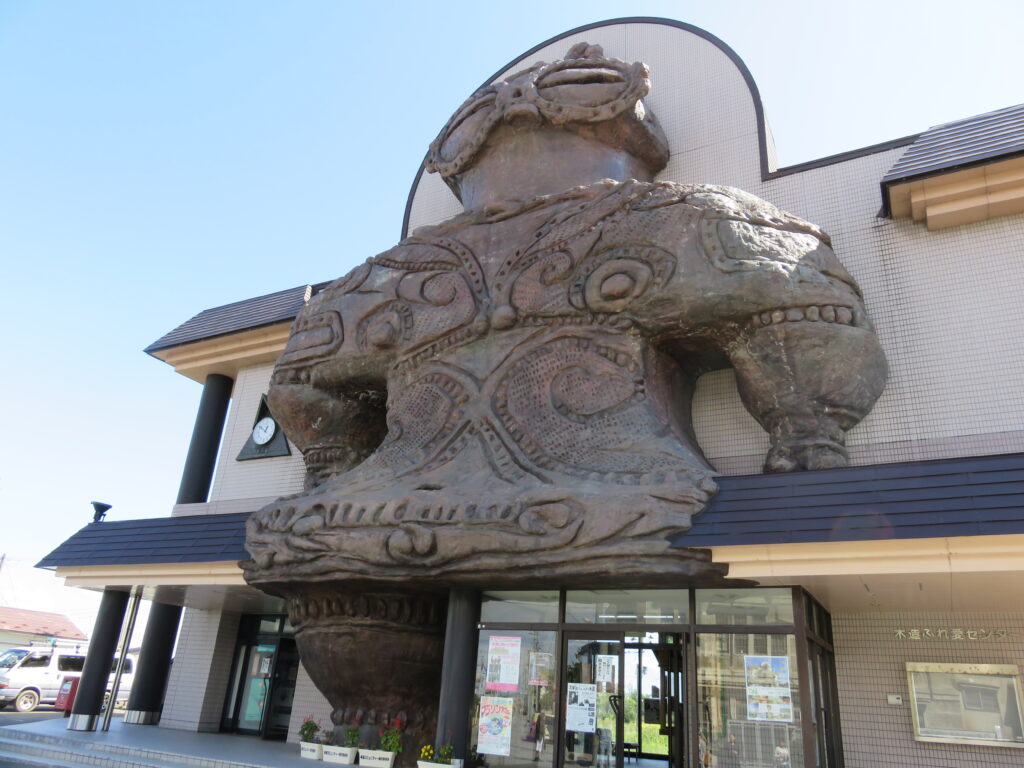

The Kizukuri station is a powerful station on the JR Gono Line in the shape of “Shako-chan,” a Shakoki-Dogu excavated from the Kamegaoka Burial Site. When the station was completed, the eyes flashed in red to announce the arrival of trains, but they were only flashed when requested by outside parties due to requests from residents in the area who said that children would be scared. Last year, the station was renovated for the spring of 2020, and the eye lights were increased to seven colors. Nowadays, Shako-chan’s eyes flash in seven different colors when a train arrives or when someone wants to flash them.
kizukuri station has been selected as one of the 100 best stations in Tohoku as “a powerful station building with a huge clay figurine welcoming visitors.
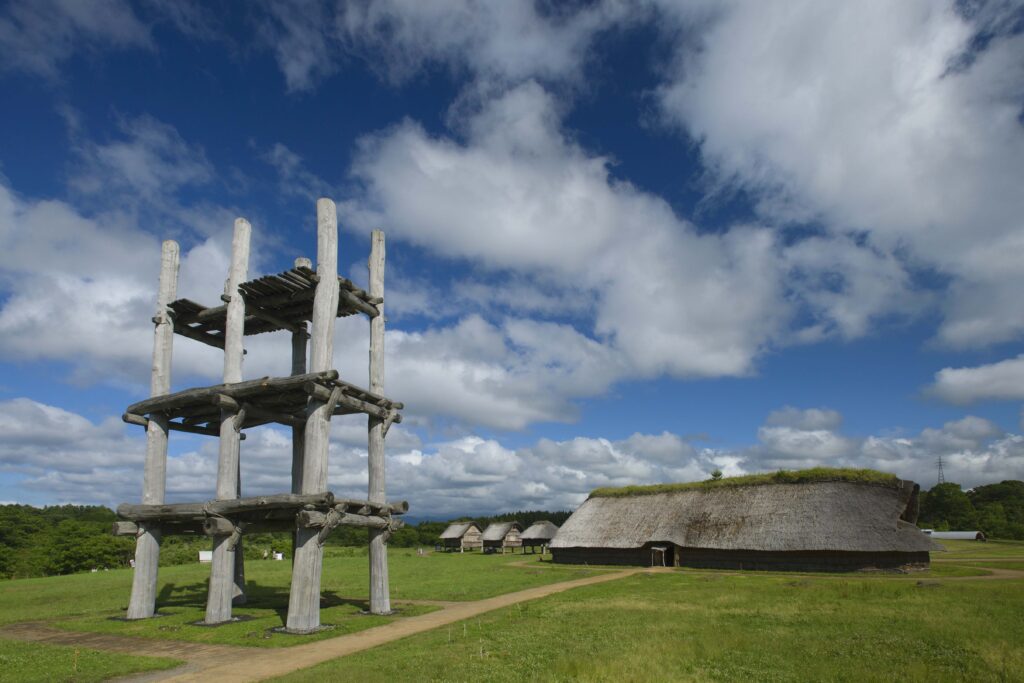
The Sannai-Maruyama Site is famous for the six pillars in the photo (left), which are about 15 meters high and 1 meter in diameter.
At this site, the remains of a large settlement from the early to middle Jomon period (about 3,900 to 2,200 B.C., about 5,900 to 4,200 years ago) were found, and in addition to the remains of many pit buildings, dugout pillar buildings, embankments, and graves of adults and children, a large amount of earthenware, stone tools, valuable wood products, and bone and horn products were excavated. Because of the importance of the ruins, the decision was made to preserve the ruins in 1994, and the ruins have been maintained and opened to the public since 1995. About 2,000 pieces unearthed here have been designated as important cultural properties.
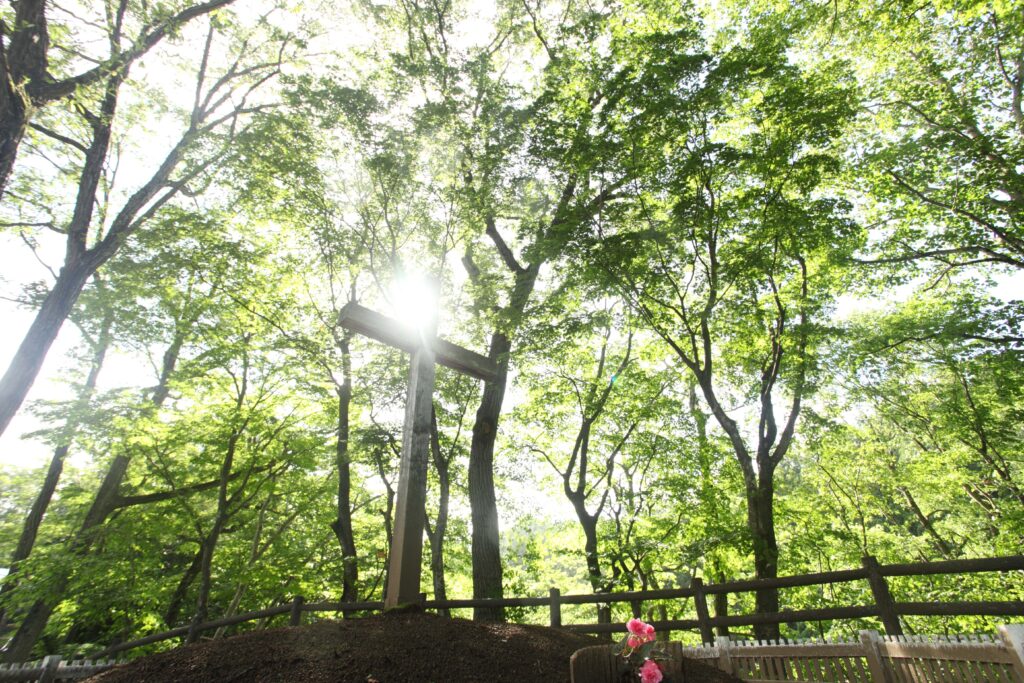
In Shingo Village, Sannohe County, Aomori Prefecture, there is an incredible hypothesis that “Christ, who was crucified on Golgotha Hill, had actually secretly crossed over to Japan…”. In 1935, Christ’s tomb was discovered in the Takeuchi archives of the Takeuchi family in Ibaraki Prefecture, and in 1936, a group of archaeologists found the “last will and testament of Christ,” which was featured in a book by archaeologist and geologist Kiku Yamane. The village of Shingo has been attracting attention as a mysterious village.
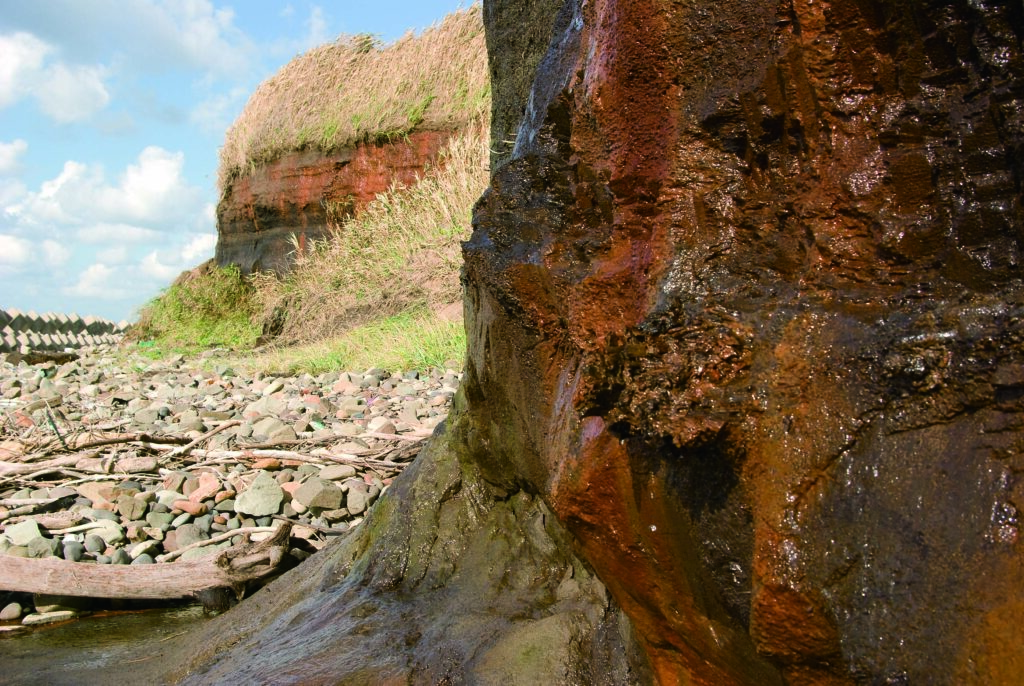
There is a 25,000-year-old buried forest that stretches for 1km along the coast of Dekijima, facing the Sea of Japan. It is said to be one of the largest such forests in the world, with thousands of coniferous trees, such as Ezo spruce and red pine, spaced 1-2 meters apart in a peat layer about 30 cm wide.The buried forest was created when the coniferous forest was submerged in water due to sudden changes such as flooding during the extremely cold period of the late Ice Age (about 80,000 to 10,000 years ago).
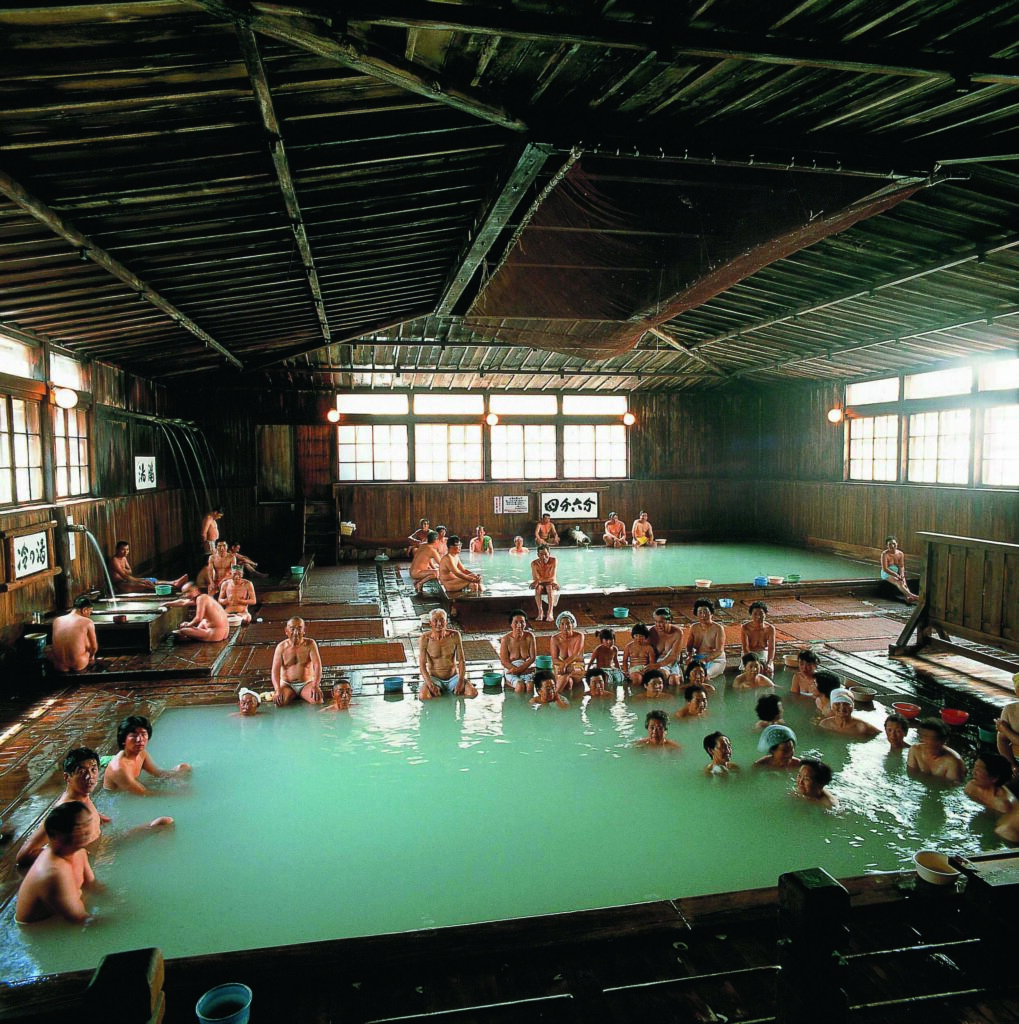
A large mixed-gender bathing area called “Hiba Sennin Buro” (the 1,000 person bath) in Sukayu Onsen.It is about 160 tatami mats in size. The height to the ceiling is about 5 meters, and it is amazing that there is not a single pillar.
This hot spring was discovered about 300 years ago when a hunter living in Yokouchi ( current Aomori City) failed to stop a deer and went into the mountains in pursuit of the wounded deer. He found it three days later, but the wounded deer had run up the rocky mountain in a flash. The deer’s agility made him wonder, and when he searched the area, he found a hot spring. Later, when he found out that the hot spring had medicinal properties, he named it “Shika no Yu (Deer’s hot spring)” and used it. Later, the name was changed to “Sukayu (Vinegar hot spring)” and “Sukayu(acidic hot spring)” due to the highly acidic nature of the water.
References
About Jomon Prehistric Sites in Northern Japan
https://jomon-japan.jp/
Korekawa Archaeological Institution (Korekawa Jomon Kan)
https://www.korekawa-jomon.jp/
Shingo village Homepage
http://www.vill.shingo.aomori.jp/sight/sight_main/kankou/sight-christ/
Sukayu Onsen
http://www.sukayu.jp/history/index.html
When I first saw the PET Bottle in DOGU, I fell in love with its majestic expression. So when the PVC doll was completed, I was happy to think, “I can carry it around!” When I hold it, strangers ask me, “What’s that?” I enjoy such moments. It’s a work of art by Katagiri, and I feel as if I am being praised, which doubles my pleasure.
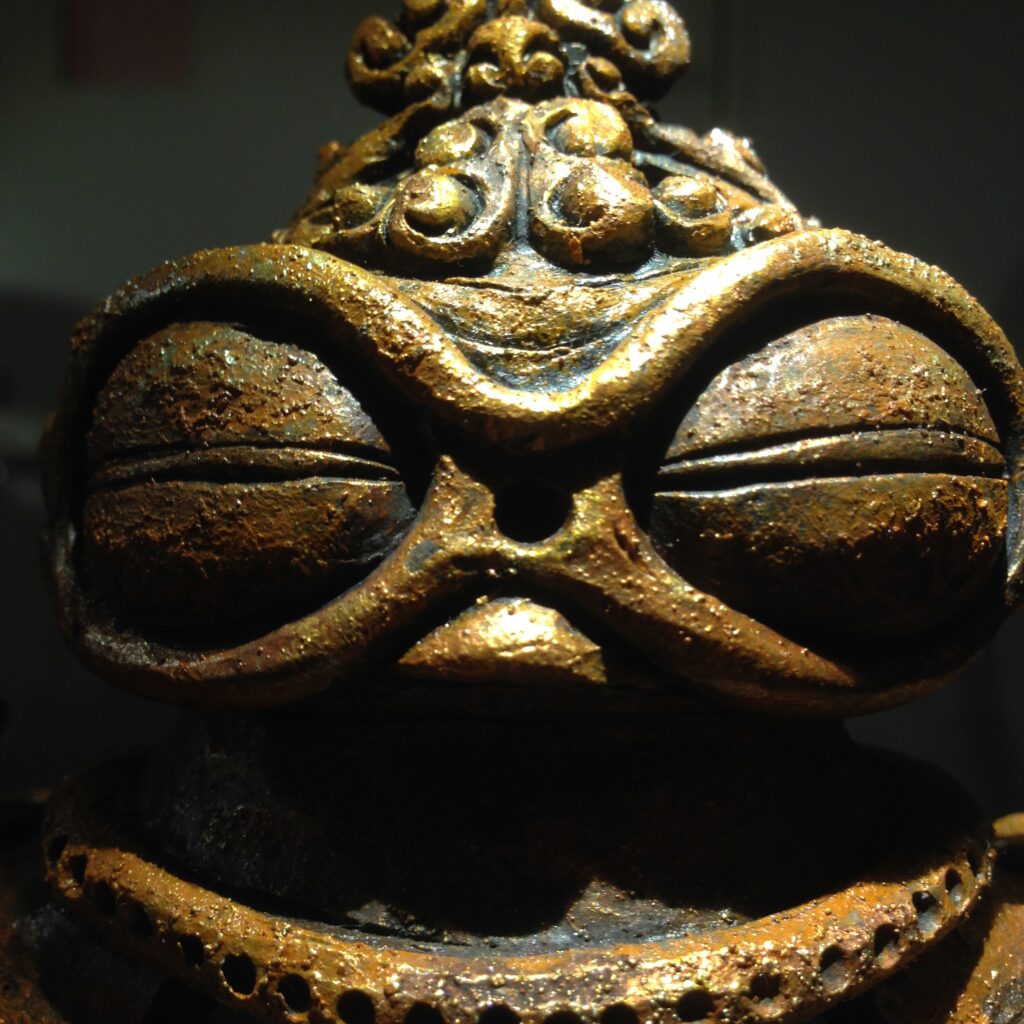
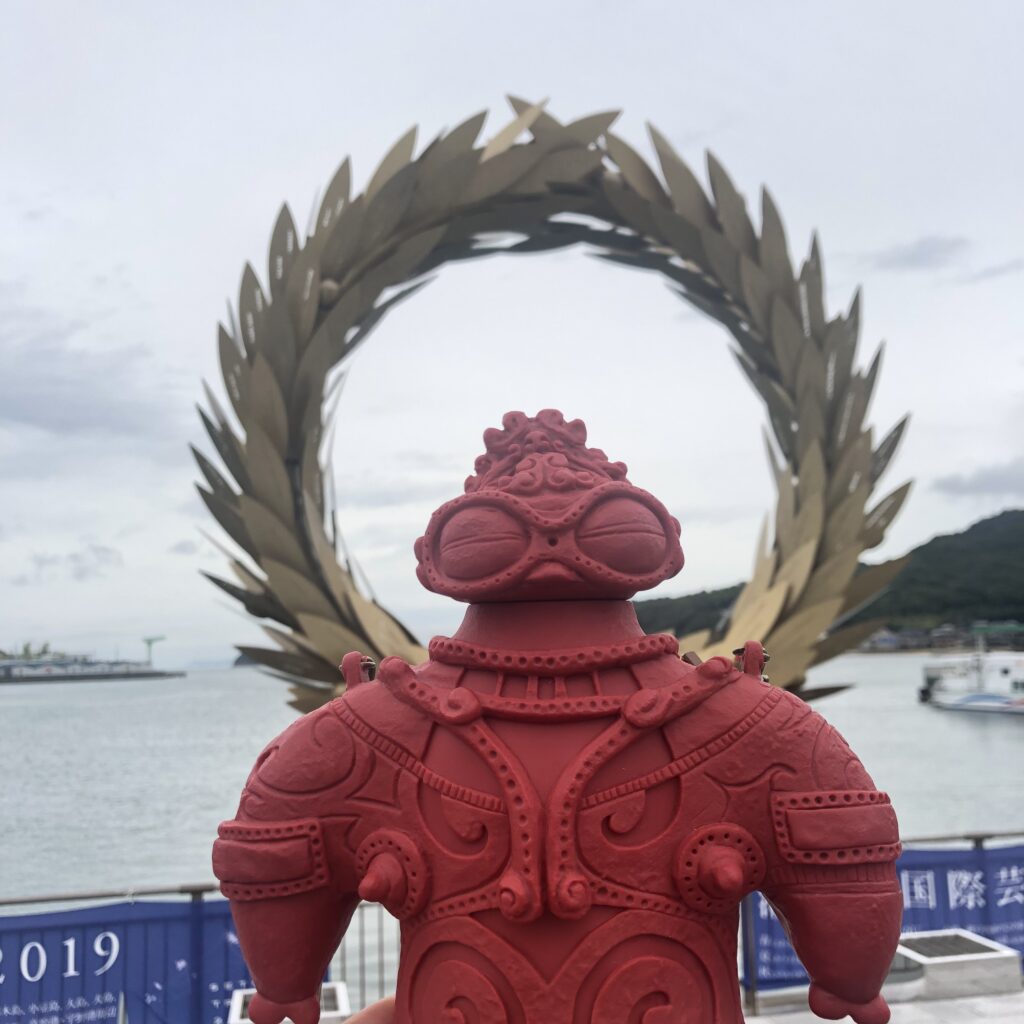
TEXT : THAT IS GOOD editorial department, Fujita